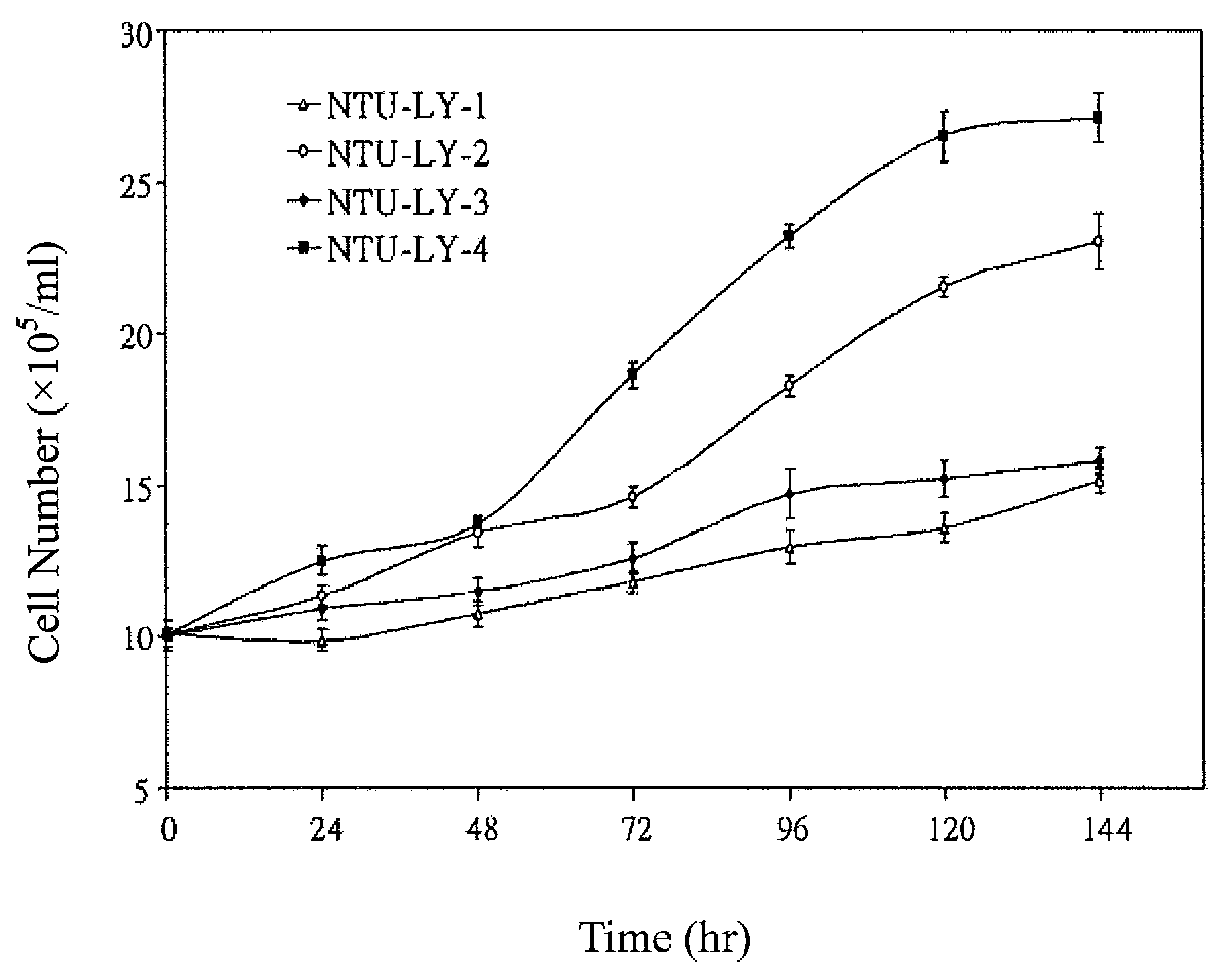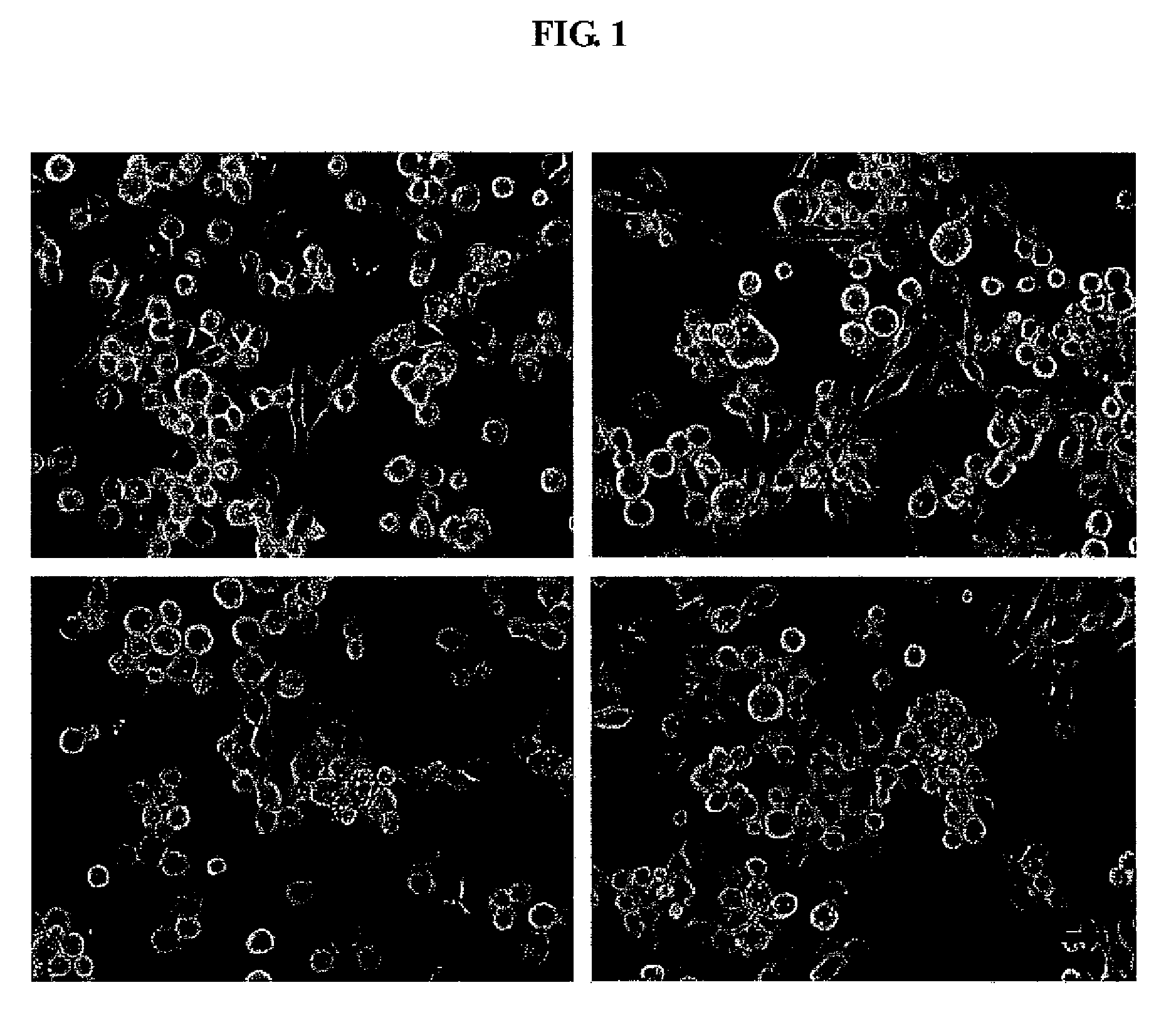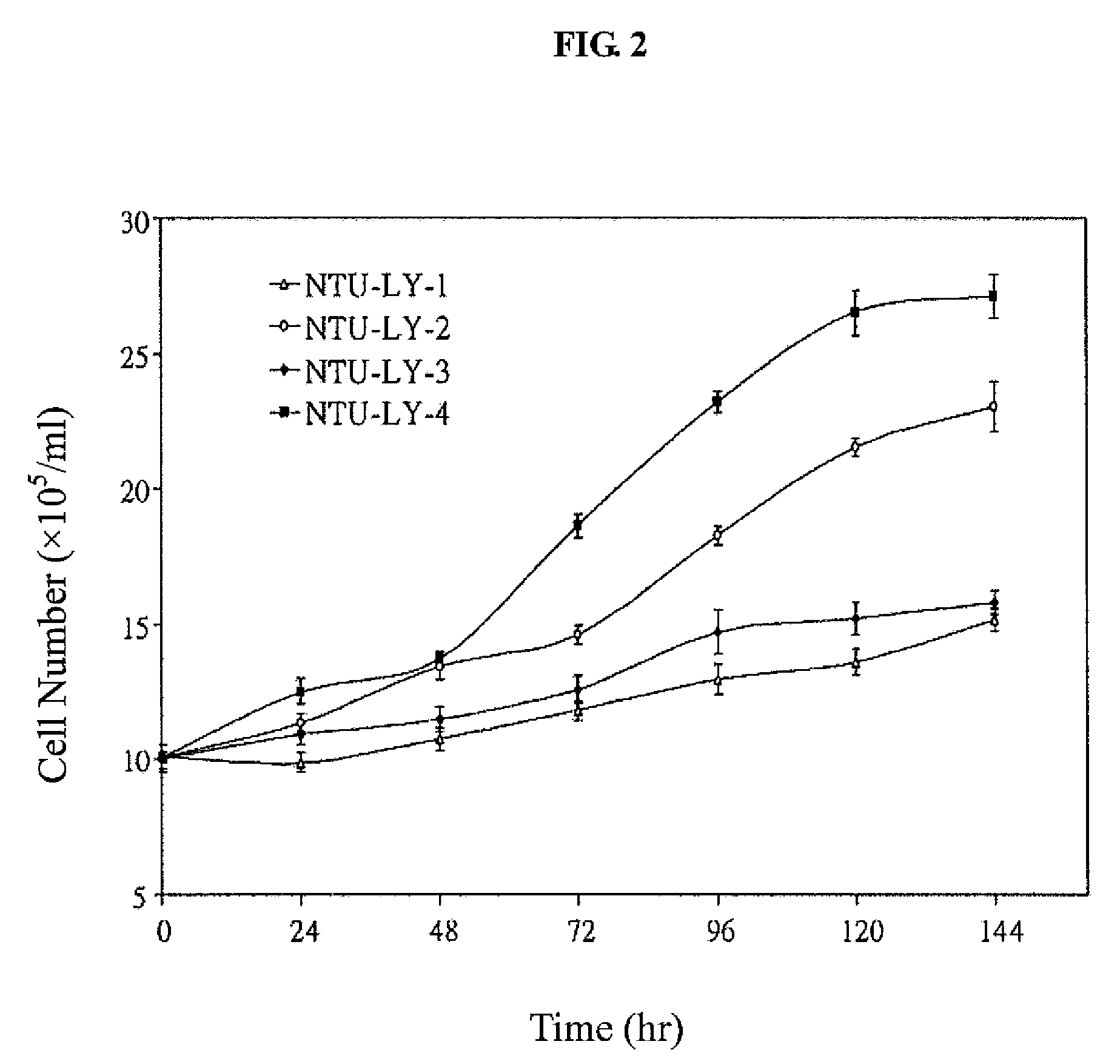Established cell lines from lymantria xylina
- Summary
- Abstract
- Description
- Claims
- Application Information
AI Technical Summary
Benefits of technology
Problems solved by technology
Method used
Image
Examples
example 1
Establishment of Cell Lines from L. xylina
[0026]The invention isolated 4 cell lines of NTU-LY-1, NTU-LY-2, NTU-LY-3, and NTU-LY-4 from the pupal tissues of L. xylina. Among them, the NTU-LY-4 was deposited in Biosource collection and research center (BCRC) of Food Industry Research and Development Institute (FIRDI) under an accession number of BCRC 960290 on May 21, 2007.
(1) Primary Culture
[0027]Larvae of L. xylina were collected from the low-elevation mountain area located in central Taiwan (Mingjian Township), and reared with leaves of the Formosa sweet gum (Liquidambar formosana) at 25° C. The larvae were allowed to go through the pupal stage. The 2-4-day-old pupae were collected and surface-sterilized with a 10% Clorox solution and 70% iodine alcohol. The pupa was cut with an ophthalmic scissors after the pupa was air dried. The internal tissues from each pupa were picked with a fine forceps and a pipet, and placed in a 25 cm2 flask with 2 ml TNM-FH medium containing 100 IU / ml ...
example 2
Cell Morphological Observation
[0030]The morphology of cells from individual cell lines of the NTU-LY-1 to NTU-LY-4 were observed under an Olympus IX-71 inverted phase-contrast microscope. Cell sizes were calculated according to a calibrated magnification factor. Average cell dimensions were determined from measurements of 30 cells. The results are shown in FIG. I and Table 1.
[0031]Referring to FIG. 1, the morphology of these 4 cell lines from L. xylina was observed under inverted phase-contrast microscope. Each cell line, NTU-LY-1 to NTU-LY-4, contained 3 cell types: round cells, spindle-shaped cells and giant cells. Slight differences of cell types between these four cell lines were found. Table 1 shows the ratio and the size of each different cell types in the respective cell lines. Among them, NTU-LY-1 contained more giant cells than the other cell lines. NTU-LY-2 and NTU-LY-4 were both typical of spindle-shaped cells, while NTU-LY-3 was characterized by predominantly round cells...
example 3
Growth Curves of the Four Newly Established L. xylina Cell Lines
[0032]The growth curves of cell lines of NTU-LY-1 to NTU-LY-4 were tested at passage around 80. 1×106 cells from each strain in log phase were seeded into 25 cm2 flasks and cultured in TNM-FH media supplemented with 8% FBS in a 28° C. incubator. Cell numbers were counted under a microscope and the population doubling times were determined (Kuchler, R. J., Development of animal cell populations in vitro. In: Kuchler, R. J.(Ed.), Biochemical Methods in Cell Culture and Virology. Dowden, Hutchingon, and Ross, Inc. Press, Stroudsburg, pp.90-113.1977). The result is shown in FIG. 2.
[0033]Refers to FIG. 2, the growth curves of the 4 cell lines from L. xylina. The population doubling times of NTU-LY-1 to NTU-LY-4 were estimated to be 177, 74, 105, and 66 h, respectively. The NTU-LY-4 cells showed the shortest doubling time, which represents a significantly fast growth rate among the 4 cell lines. Cells with a short population ...
PUM
 Login to View More
Login to View More Abstract
Description
Claims
Application Information
 Login to View More
Login to View More - R&D
- Intellectual Property
- Life Sciences
- Materials
- Tech Scout
- Unparalleled Data Quality
- Higher Quality Content
- 60% Fewer Hallucinations
Browse by: Latest US Patents, China's latest patents, Technical Efficacy Thesaurus, Application Domain, Technology Topic, Popular Technical Reports.
© 2025 PatSnap. All rights reserved.Legal|Privacy policy|Modern Slavery Act Transparency Statement|Sitemap|About US| Contact US: help@patsnap.com



